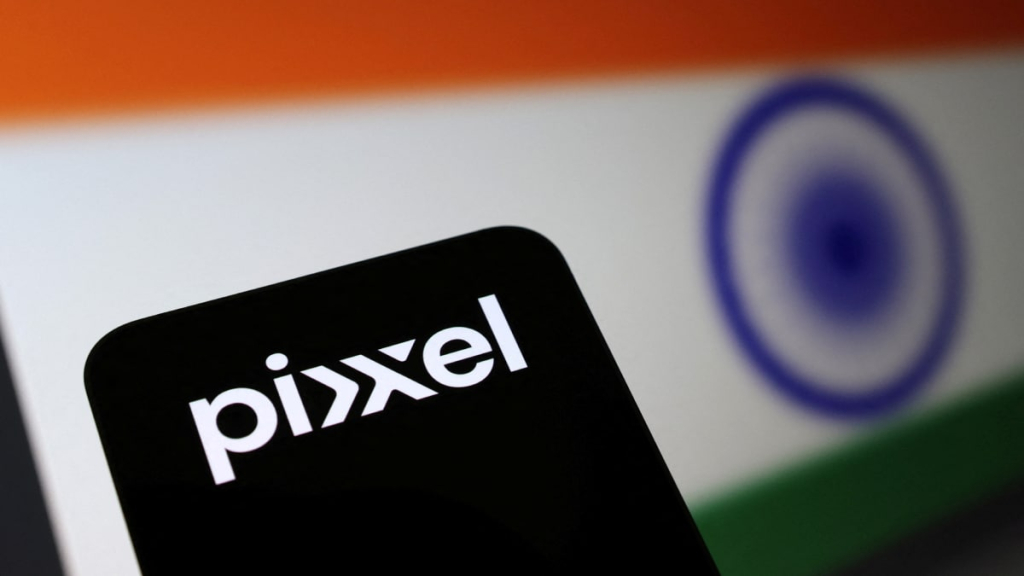Pixxel, an Indian startup focused on satellite technology, is preparing to launch three of its six hyperspectral imaging satellites aboard a SpaceX rocket from California on Tuesday. This marks a significant development for the country’s growing private space industry, according to insights shared with Reuters by Pixxel’s chief executive.
The satellites will be positioned in a sun-synchronous orbit approximately 550 kilometers above Earth, while the remaining trio is scheduled for deployment in the second quarter of this year.
The launch is slated for 10:45 a.m. Pacific Time (1845 GMT) at Vandenberg Space Force Base, coinciding with just after midnight in India the following day, pending final regulatory approvals.
Awais Ahmed, the founder and chief executive of Pixxel, revealed plans to expand the company’s fleet by adding 18 more satellites to the six already under development. The objective is to capture a share of the satellite imaging market, which is projected to grow to $19 billion (approximately ₹1,64,451 crore) by 2029.
This launch represents a crucial milestone for both India’s emerging private space sector and the five-year-old startup backed by Google.
Pixxel intends to employ hyperspectral imaging technology, which collects detailed data across a broad spectrum of light bands, to support multiple industries, including agriculture, mining, environmental monitoring, and defense.
The company asserts that its satellites are capable of delivering enhanced insights that can lead to improved crop yields, efficient resource tracking, and meticulous monitoring of oil spills and national borders, surpassing the capabilities of existing technologies.
“Currently, the satellite imagery market stands at approximately $4.3 billion (around ₹37,219 crore), with analysis contributing an additional $14 billion (about ₹1,21,180 crore). By 2029, it is expected to reach $19 billion (close to ₹1,64,457 crore). Hyperspectral imaging, being a novel technology, could potentially secure $500 million (around ₹4,327 crore) to $1 billion (approximately ₹8,676 crore) from this segment, alongside extra revenue from analysis,” Ahmed shared.
Pixxel has attracted around 65 clients, including major corporations such as Rio Tinto and British Petroleum, along with India’s Ministry of Agriculture. Some clients are already purchasing data from the company’s demonstration satellites, and contracts for further data from the Firefly constellation are in place.
Regarding defense applications, discussions are primarily occurring in the U.S. and India, as well as in other regions through distributor partnerships. Government agencies typically prefer to see satellites launched and operational before finalizing procurement decisions, according to Ahmed, who is 27 years old.
Following the launch, Pixxel anticipates establishing initial communication with the satellites around two and a half hours later, with complete commercial imaging capabilities expected to be operational by mid-March.
Despite its ambitious plans, Pixxel faces significant competition within the global satellite market, which is largely dominated by the United States and China.
The U.S. currently leads in both commercial and government satellite launches, propelled by private enterprise contributions like SpaceX and numerous government contracts. Meanwhile, China has made substantial efforts to assert itself in the market through aggressive state-backed initiatives and swift advancements in low Earth orbit satellite technology.
Although India has a robust foundation in space capabilities, it holds a mere two percent share of the global commercial space market. The Indian government is now relying on private entities to expand this share, with aspirations to elevate the country’s space sector from the current $8 billion (around ₹69,258 crore) to $44 billion (approximately ₹3,80,976 crore) by 2030.
Pixxel aims to tackle these challenges with its Firefly constellation, which features a resolution of 5 meters and a coverage width of 40 kilometers, surpassing competitors like Finland’s Kuva Space and San Francisco-based Orbital Sidekick, whose technologies typically possess lower resolution and narrower swathes.
“If their commissioning is successful, their imaging capacity in the hyperspectral band will outpace that of ISRO, representing a significant advancement for the Indian industry,” noted Narayan Prasad, chief operations officer at the Netherlands-based space industry marketplace Satsearch.
© Thomson Reuters 2025
(This story has not been edited by NDTV staff and is auto-generated from a syndicated feed.)






